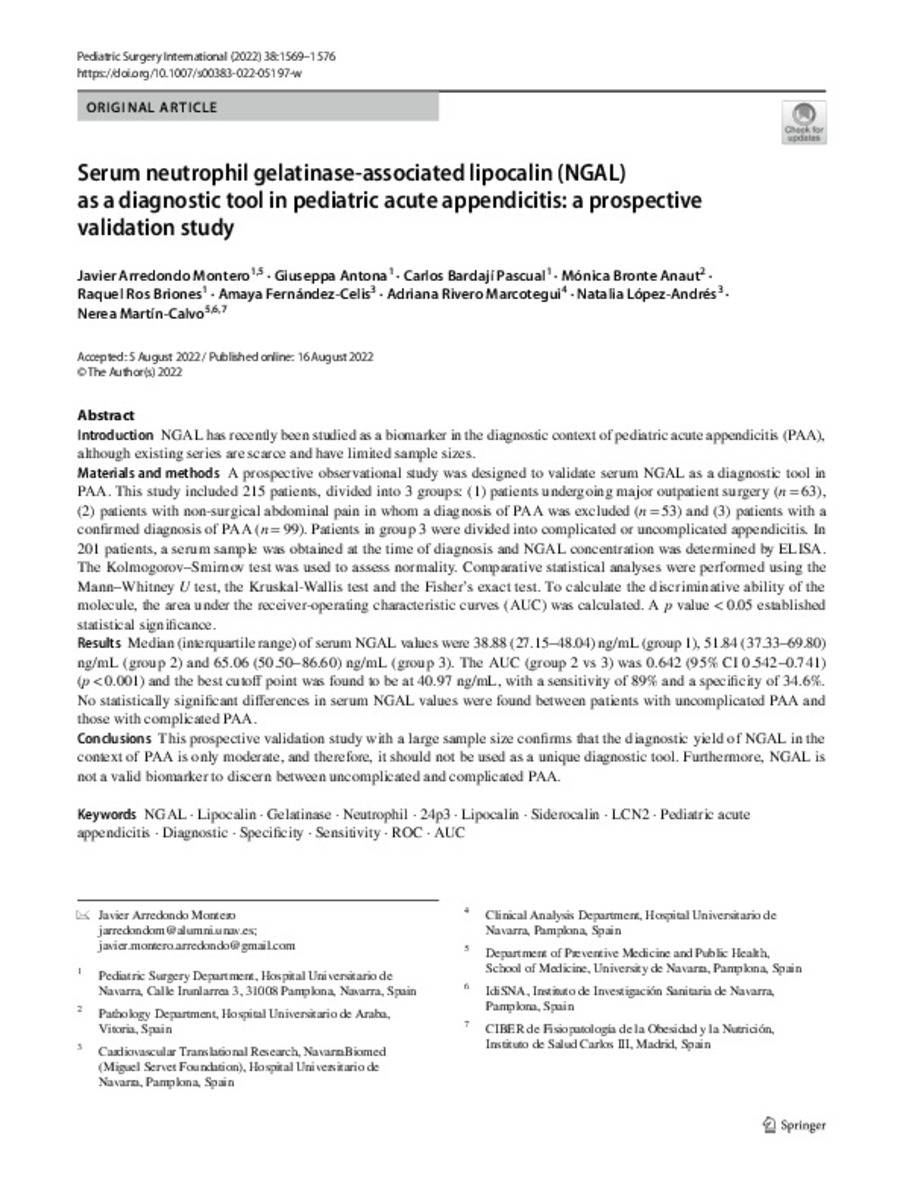Serum neutrophil gelatinase-associated lipocalin (NGAL) as a diagnostic tool in pediatric acute appendicitis: a prospective validation study
Keywords:
24p3
AUC
Diagnostic
Gelatinase
LCN2
Lipocalin
NGAL
Neutrophil
Pediatric acute appendicitis
ROC
Sensitivity
Siderocalin
Specificity
Note:
This article is licensed under a Creative Commons Attribution 4.0 International License
Citation:
Arredondo-Montero, J. (Javier); Antona, G. (Giuseppa); Bardají-Pascual, C. (Carlos); et al. "Serum neutrophil gelatinase-associated lipocalin (NGAL) as a diagnostic tool in pediatric acute appendicitis: a prospective validation study". Pediatric Surgery International. 38 (11), 2022, 1569 - 1576
Statistics and impact
0 citas en

0 citas en

Items in Dadun are protected by copyright, with all rights reserved, unless otherwise indicated.







